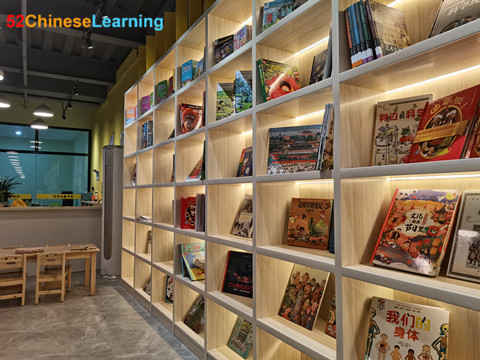Copy link succeeded! Now can share to friends.
As people who live in San Francisco, are you also worried about your baby’s Chinese level? Are you eager to know more about the Chinese school in San Francisco? For many new immigrants, when they first arrived in the United States, they were most worried that the kids can’t keep up with their English. However, the more time they spend in the US, the more they see that their Chinese is slowly fading.
Consequently, they find themselves worrying about the Chinese again. Due to environmental factors, kids quickly learn how to speak fluent American English. English become their primary source of communication. They might even begin to speak English with you when they get home.
Consequently, parents are constantly worried. Not only because their kids are quite adept in spoken Chinese but always fail when reading and writing, but also because their kids are starting to acculturate to the English world. Many Chinese parents will send their children to Chinese after school on weekdays, and some will also send them to Chinese schools on weekends.

Children read less Chinese and are useless. If parents pay more attention to Chinese and hope that their children can speak, listen, read and write fluently in both Chinese and English in the future, there is another option, that is, immersion in Chinese schools. Today, we will sort out the Chinese immersion schools in Xiawan District.
Total Immersion Language Learning is a popular language training concept in recent years. The method is to let students spend several hours every day completely immersed in the classroom learning environment of the target language, take classes, study and play in the target language. The environment also develops interaction between teachers and students. Learn to think and express in a new language by repeatedly receiving the stimulation of new language information.
At present, many public or private schools in the Bay Area offer immersion education programs in Chinese, Spanish, and Cantonese. Here are a few issues that we often care about.
In order to meet the needs of the new round of “Chinese fever”, the Chinese courses offered by Nanqiao School run through the whole process of students’ growth from the kindergarten class to the third grade of senior high school. The school no longer uses the desktop, Hong Kong-style traditional characters and the traditional Cantonese teaching. Instead, they fully implemented the current syllabus of Chinese education in China. They teach in Mandarin and simplified characters.
According to the requirements of the Overseas Chinese Affairs Office of China, Chinese textbooks published by the Jinan University of China are adapted. The teaching content is rich and colorful. It utilizes a wide array of aspects. from pinyin, characters, words, and sentences to listening, speaking, reading and writing. It also makes grammar knowledge to background knowledge of textbooks to various exercises. There are various forms of teaching methods, such as graphics, words, sounds, images, animations and multimedia images.
Founded in 1981, Cornerstone Christian School enrolls students from kindergarten to 12th grade. It has been serving the greater Hartford area for more than 25 years. Located in Manchester, the school offers a rolling renewal system, which is determined based on annual income, family size, and the number of students attending the cornerstone. In addition, the school also provides various tuition payment schedules, which will meet most of any budget.
Generally speaking, there are more than 270 immersion Chinese (Putonghua) schools in the United States, including public schools, Charter schools, and private schools. About 26 schools in the Bay Area offer Chinese immersion programs, most of which are for grades 0-5 or 0-8. However, there are a few schools that offer courses for grades 9-12. Most of these immersion Chinese programs are in the form of bilingual classes, and there are cases where the whole school is bilingual (such as Yu Ming Charter School in East Bay).
Generally, Chinese schools teach simplified Chinese and traditional Chinese. The distinction depends on the schools. On the other hand, some schools teach both simplified Chinese and traditional Chinese, such as Yu Ming Charter School.
With regard to the proportion of Chinese and English courses in schools, most schools adopt the decreasing method. For example, Meyerholz Elementary School has 70% Chinese and 30% English in K and grade1, 60%:40% in Grades 2 and 3, and 50%:50% in Grades 4 and 5. In Joaquin Miller Middle School, the ratio between Chinese and English continues to drop to 30% and 70%.
Many parents may think that Chinese schools are all Chinese children. However this is simply not true.. With the strengthening of China’s economic strength, more and more Americans or people of other ethnic groups are paying more and more attention to the Chinese. There’s also a growing interest in the Chinese language and culture. These motivations serve as an impetus for children to apply for the Chinese immersion programs. Take Puglisi School in San Francisco as an example; There are 150 students, of which Chinese and white students account for 27% and 26% respectively.
Now, do you know more about the immersion Chinese school in San Francisco?
Your first 1-on-1 Chinese lesson offer